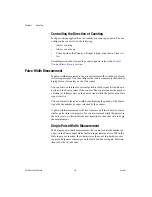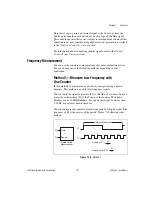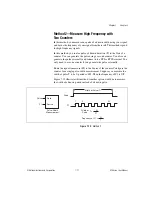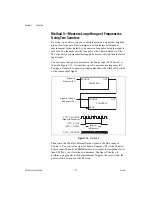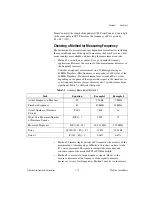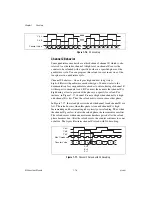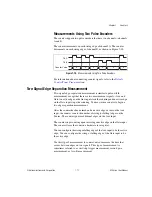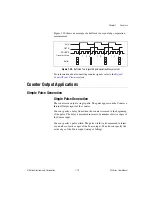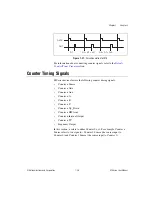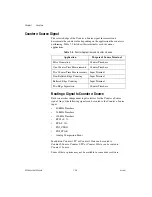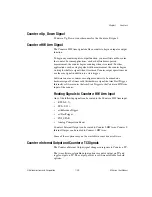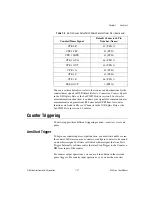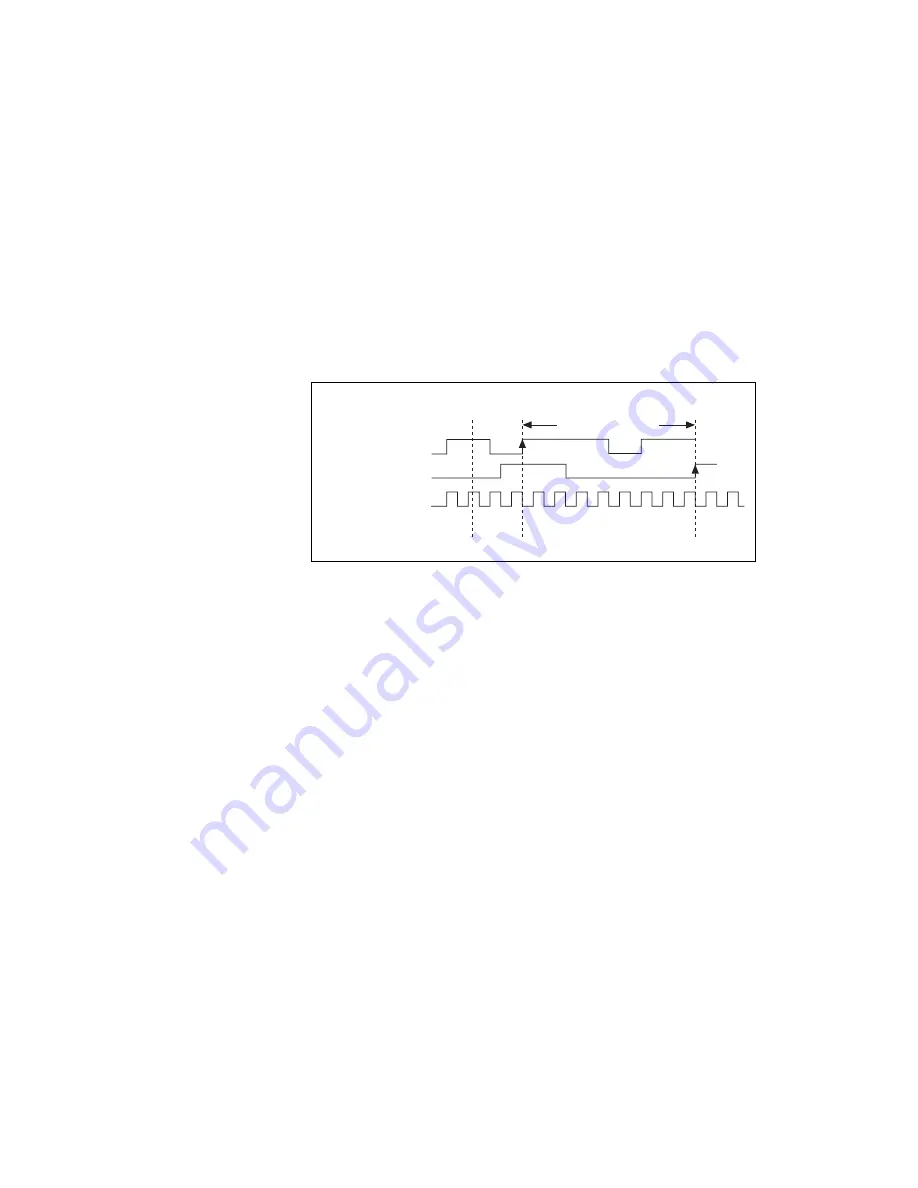
Chapter 7
Counters
7-18
ni.com
Single Two-Signal Edge-Separation Measurement
With single two-signal edge-separation measurement, the counter counts
the number of rising (or falling) edges on the Source input occurring
between an active edge of the Gate signal and an active edge of the Aux
signal. The counter then stores the count in a hardware save register and
ignores other edges on its inputs. Software then reads the stored count.
Figure 7-19 shows an example of a single two-signal edge-separation
measurement.
Figure 7-19.
Single Two-Signal Edge-Separation Measurement
Buffered Two-Signal Edge-Separation Measurement
Buffered and single two-signal edge-separation measurements are similar,
but buffered measurement measures multiple intervals.
The counter counts the number of rising (or falling) edges on the Source
input occurring between an active edge of the Gate signal and an active
edge of the Aux signal. The counter then stores the count in a hardware save
register. On the next active edge of the Gate signal, the counter begins
another measurement. A DMA controller transfers the stored values to host
memory.
AUX
Counter
Armed
8
0
0
0
0
1
2
3
4
5
6
7
8
8
8
Measured Interval
GATE
SOURCE
Counter Value
HW Save Register

